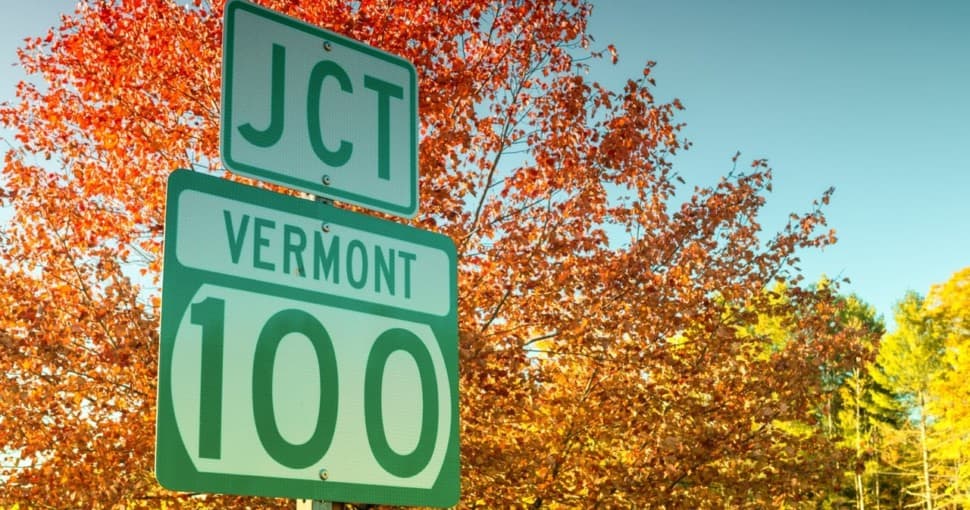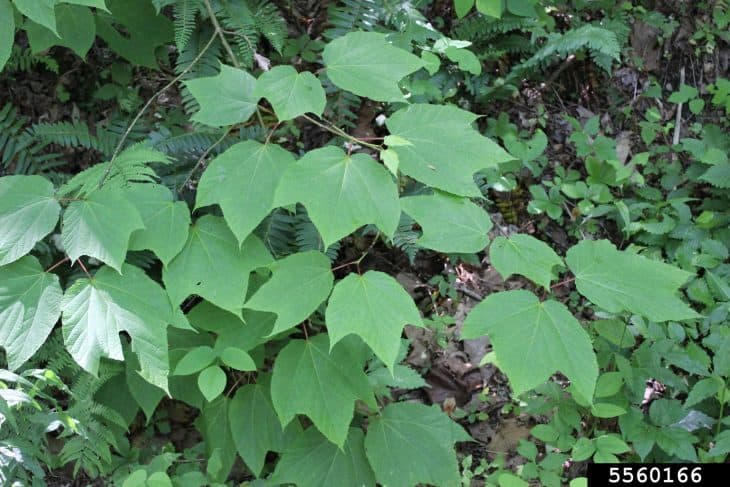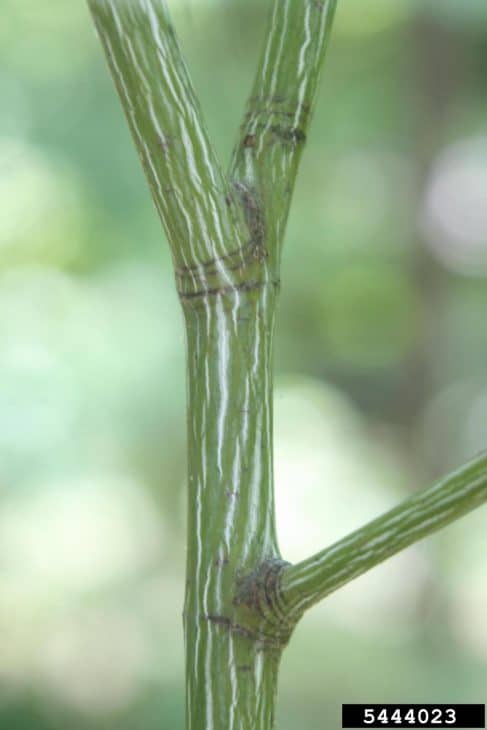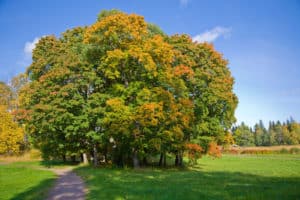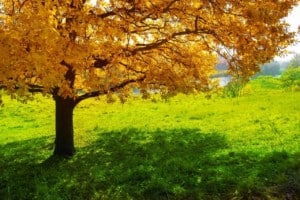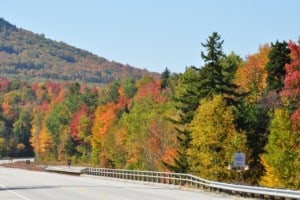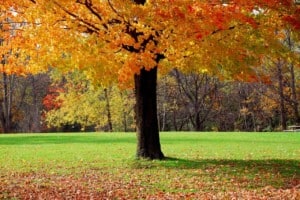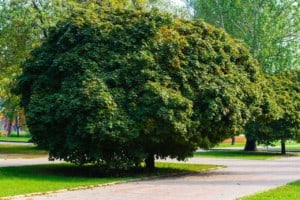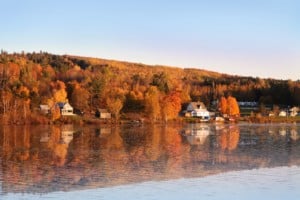In Vermont, forests cover about 8 for every 10 acres or approximately 4.6 million acres. Cropland, developed pasture, as well as other non-forest lands, such as homes, commercial and industrial buildings, wetlands, and recreational spaces, make up the final 2 acres. Forests cover more of Vermont presently than at any other period in the last century. Vermont is also well known for the fall maple tree foliage colors.
Contents
Vermont’s forest land can be classified primarily into two geographical units, i.e., the beech, birch, and maple trees in southern Vermont’s woodlands and the spruce and fir forests in the northeast region of the state. Hardwood trees exceed softwood trees by a factor of two in Vermont’s woodlands.
Sugar maple seems to be the most common tree species, with up to 50% densities in the Northern Piedmont area and 20 – 50% throughout the northern Green Mountains as well as Champlain Valley. Red maple is also common in Vermont, especially in the southern half of the state. Sugar maple, on the other hand, outnumbers all other species in terms of both growing stock and sawtimber output.
As the largest producer of maple syrup in New England and the country, the sugar maple industry in Vermont is a good example of long-term forest use that does not necessitate tree removal. Vermont’s maple syrup producers have modernized the process by using plastic tubing to collect the sap from the trees. They must adhere to strict standards for purity, since maple syruping is one of the few practical cottage industries left in New England.
In this post, we’ll mention the different types of maple trees prevalent in the state of Vermont.
1. Sugar Maple or Rock Maple (Acer saccharum)
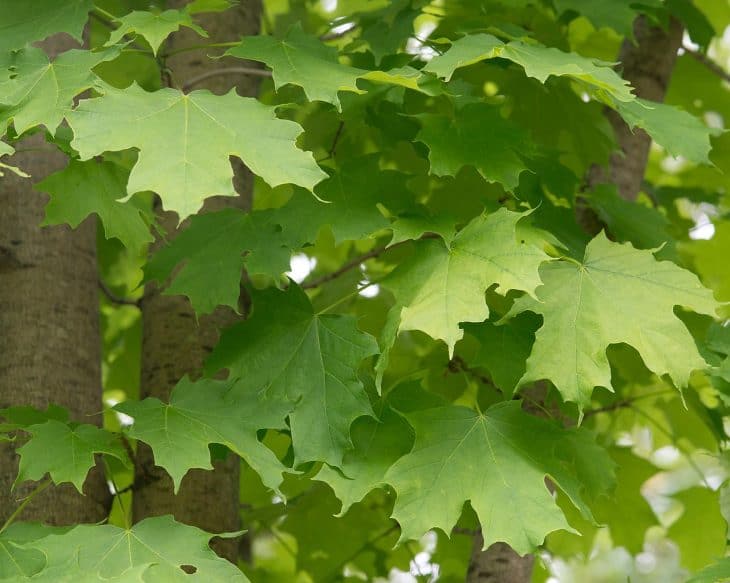
A sugar maple tree can grow to be 70-120 feet tall and generate 2 to 3 pounds of sugar. It has tiny wing-shaped pods and five-lobed leaves. The leaves become a brilliant yellow color in the fall. When the sugar maple is between 10 and 15 years old, it starts to blossom with yellow-green flowers in the spring.
2. Amur Maple (Acer ginnala)
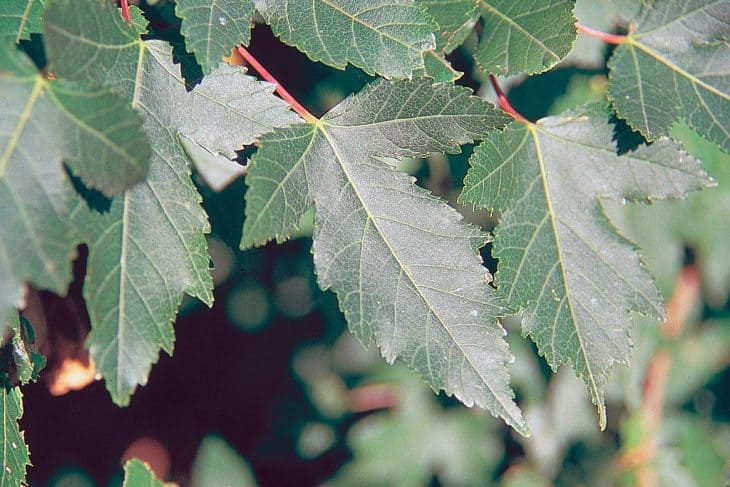
Amur maple is a deciduous shrub or small tree with spectacular crimson fall color that reaches up to 20 feet tall. The leaves are 3-lobed, with a longer length than width, and toothed edges. The flowers are aromatic, white, and clustered loosely. New leaves grow in April and May when the flowers bloom. Young branches have smooth grey bark, whereas mature branches have brownish-gray bark.
3. Ashleaf / Box Elder Maple (Acer negundo)
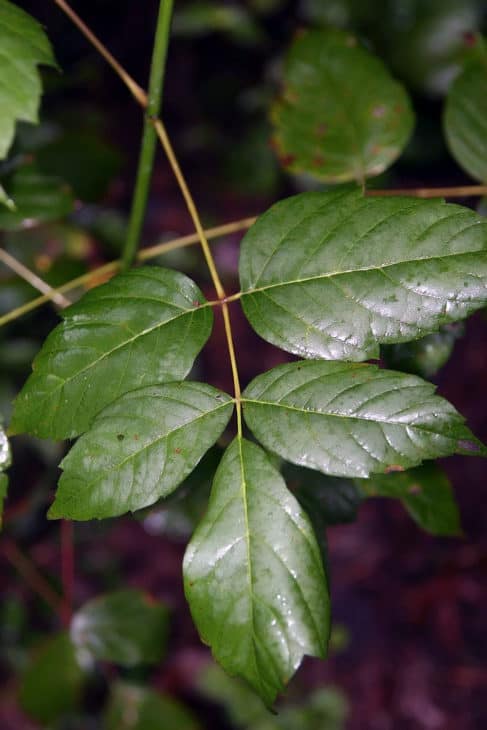
The ash-leaf maple, also known as box elder, is a smallish to medium-sized tree that grows to be 35 to 50 feet in height, with a small trunk, broadly spread branches, and light green leaves. Male and female greenish-yellow flowers bloom in March and April, several in a cluster. Due to its uneven growth, base, and compound leaves, it stands out among other maple trees.
4. Striped Maple (Acer pensylvanicum)
The Striped Maple seldom reaches a height of more than 20-30 feet. The short trunk is usually separated into rising, arched branches. It has a smooth, greenish-brown bark, with delicate white or pale vertical lines. The bark grows to a reddish-brown color with heavy vertical stripes as it matures. It has little greenish-yellow flowers that bloom in loose hanging clusters in spring and early summer.
5. Norway Maple (Acer platanoides)
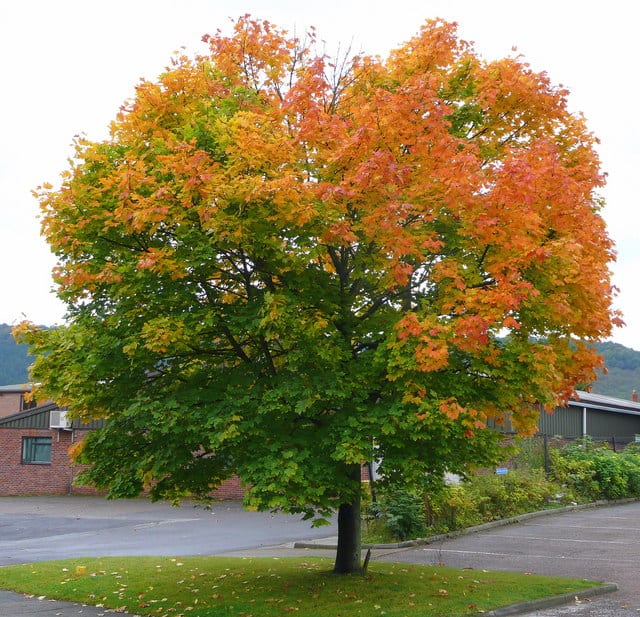
Normally, the Norway Maple grows to a height of 40-60 feet but it can grow to 100 feet. The tree’s bark is grey and grooved consistently and shallowly. The leaves are typically green in color, while some types have dark crimson foliage. The green leaves turn a yellow tint in autumn. The yellow-green flowers bloom in April and May, each measuring 0.25 inches wide.
6. Red Maple (Acer rubrum)
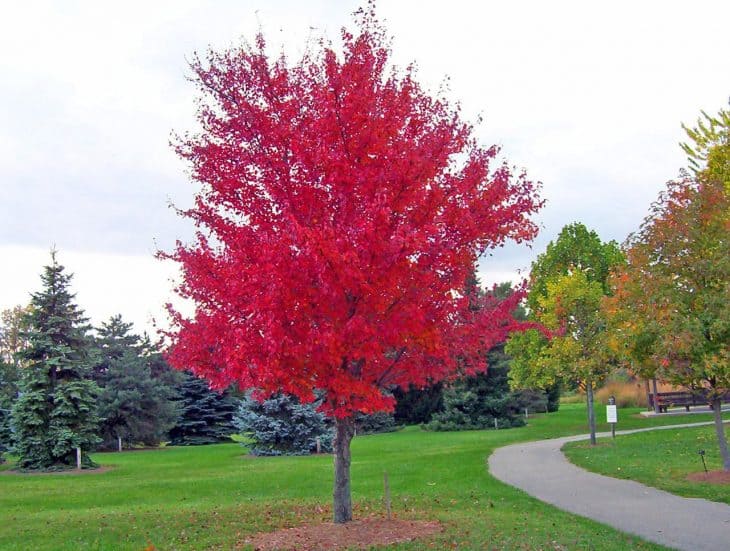
The Red Maple is a local tree that produces brilliant orange to red blooms in the springtime and orange to scarlet leaves on trees up to 50 feet tall. In autumn, not all species become red; some remain green or yellowish. The female trees’ blossoms and foliage could be brighter crimson. They produce optimum growth and color in acidic soils.
7. Silver Maple (Acer saccharinum)
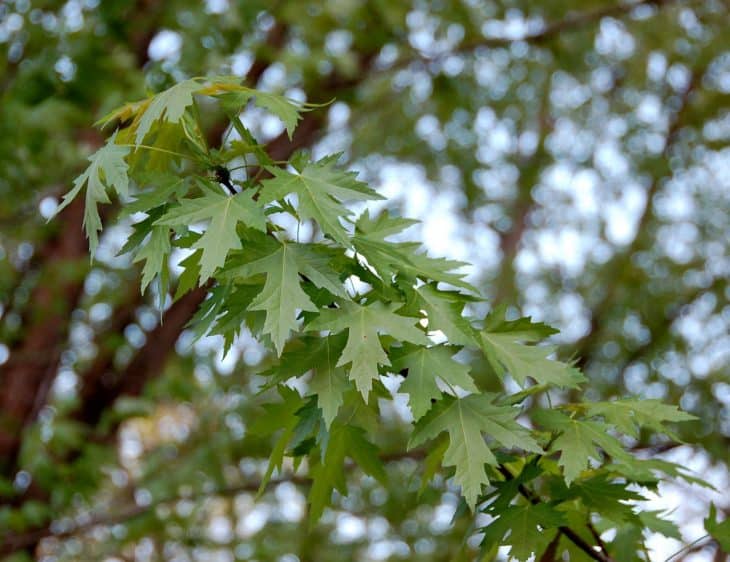
The Silver Maple grows quickly up to 50-70 feet and can tolerate a wide range of soil conditions from wet to dry. It has a shorter lifespan than other maples, a weak yellow fall color, and roots close to the ground that might break sidewalks and roads. It flowers in spring, with red and yellow buds.
8. Mountain Maple (Acer glabrum)
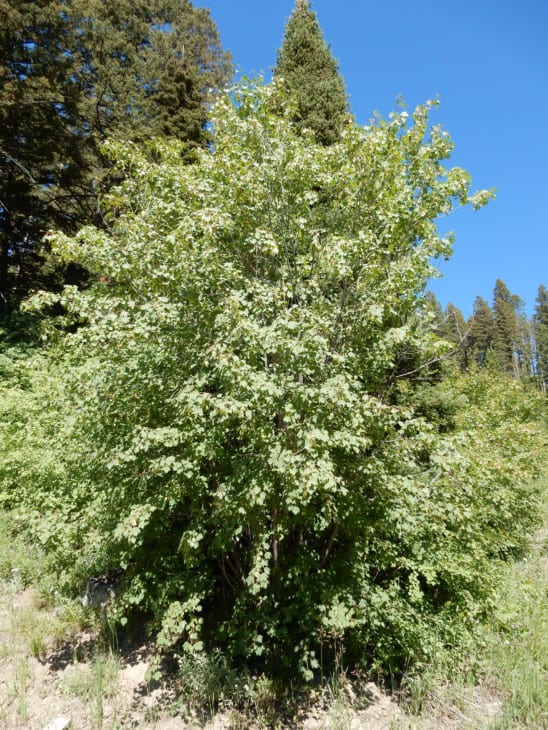
Acer glabrum is a tiny shrub or tree that can grow up to 30 feet in height but usually stays under 5 feet. When dormant, it is an extremely cold-hardy plant, surviving temperatures as low as -25°C. It flowers in spring with insignificant yellow-green clusters. There are 4 to 6 varieties of the Mountain Maple tree.

